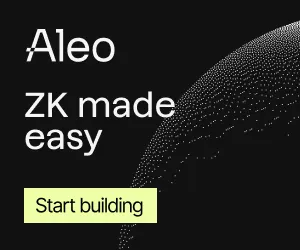Ethereum Layer-2 Rollups Are Mispricing Small Transactions - New Study Reveals Critical Flaw
Your micropayments are getting slaughtered by hidden math.
Transaction Economics Gone Wrong
Layer-2 networks built to scale Ethereum are systematically overcharging for small transfers. The fee structures that promised democratized access now penalize the very users they were designed to help.
Algorithmic Blind Spots
Fixed overhead costs get distributed unevenly across transaction sizes. Smaller transfers absorb disproportionate fees while whales skate by with better rates. The economic models assume one-size-fits-all—but the math only works for heavy hitters.
Market Impact
This pricing flaw creates artificial barriers for mainstream adoption. Retail users face death by a thousand cuts while institutions enjoy bulk discounts. Another case of decentralized technology serving centralized interests—Wall Street would be proud of that pricing tier.
The fix requires fundamental protocol changes, not just band-aid solutions. Until then, your coffee purchase on-chain will cost more than the coffee itself.


These three costs vary independently, but the study finds that most rollups do not account for them separately. Instead, they often collapse them into a single formula or apply fixed rules, which can distort prices.
According to the researchers, this design means small transfers may be mispriced. Users making low-value payments can end up paying more than necessary, while attackers can take advantage of underpriced transactions to send large volumes of spam at little cost.
The authors benchmarked five major rollups—Polygon zkEVM, zksync Era, Scroll, Optimism, and Arbitrum—and found wide differences in how fees are set. Some networks fix charges at the time a transaction is submitted, others wait until a batch is sealed, and some issue refunds if the actual cost ends up lower than expected.
Those mechanisms may appear technical, but they create opportunities for exploitation. For example, a refund system can be gamed by attackers who submit large numbers of transactions, then reclaim part of the fee while still consuming network resources.
“Naive fee models create exploitable seams,” the authors write, warning that flat or static fee curves are especially vulnerable.
Beyond user frustration, the paper argues, these weaknesses create systemic risk. If mispricing allows attackers to subsidize small transactions, then they can mount denial-of-service attacks that clog the network, degrade performance, or raise costs for honest users. The problem lies not in faulty code, but in economic design choices that shape incentives.
The study stresses that these issues matter as Ethereum’s rollup ecosystem grows. Rollups today secure tens of billions of dollars in assets, making them high-value targets.
“Ignoring these incentive gaps is no longer safe,” the authors write.
As mitigation, the paper calls for “multidimensional” fee mechanisms that separately price computation, data posting, and proving. Aligning fees with actual resource use, it argues, WOULD make systems more resistant to spam while giving users more predictable costs.
Tools such as dynamic adjustment, partial batching, and disclosure of cost components could all help address the issue. Some rollup teams are already experimenting with adaptive fee curves and real-time modeling, but the study notes that standards are not yet established.
The findings come as ethereum advances a roadmap built around zero-knowledge proofs and rollup-centric scaling. Zero-knowledge virtual machines, or zkVMs, promise stronger verification of transactions, but they also introduce proving costs that can spike depending on demand and available hardware. Models that do not account for that variability, the paper says, risk breaking down under stress.
For users, exchanges, and wallets, that can mean inconsistent fees and degraded service. For developers and investors, the study’s message is to look beyond headline throughput or nominally low fees and examine how those fees are calculated.
“Incentives are security,” the authors argued, urging the Ethereum community to treat transaction pricing as part of consensus design rather than an afterthought.

